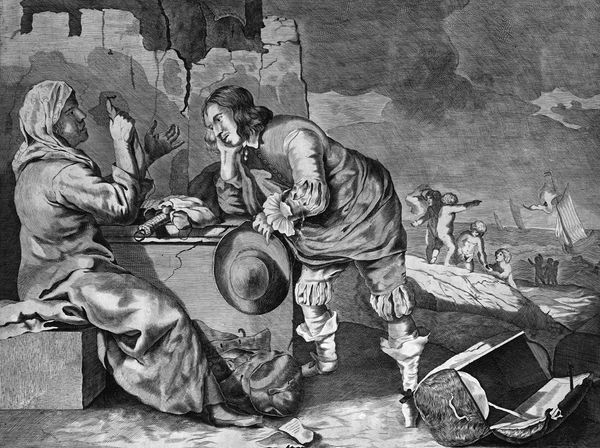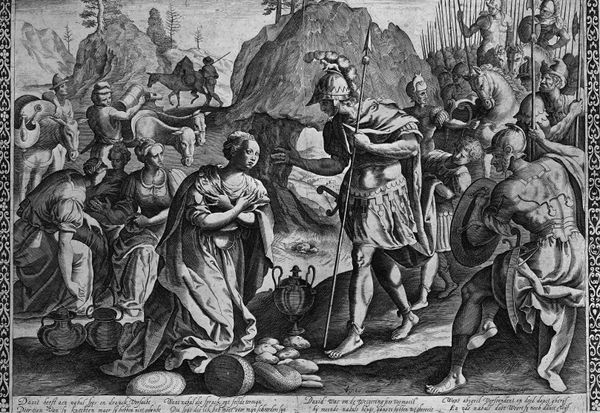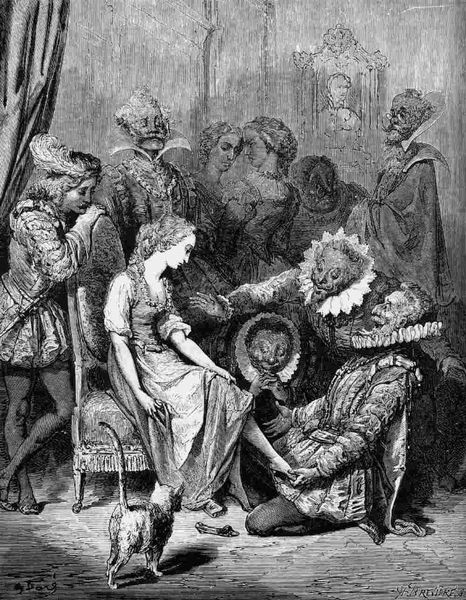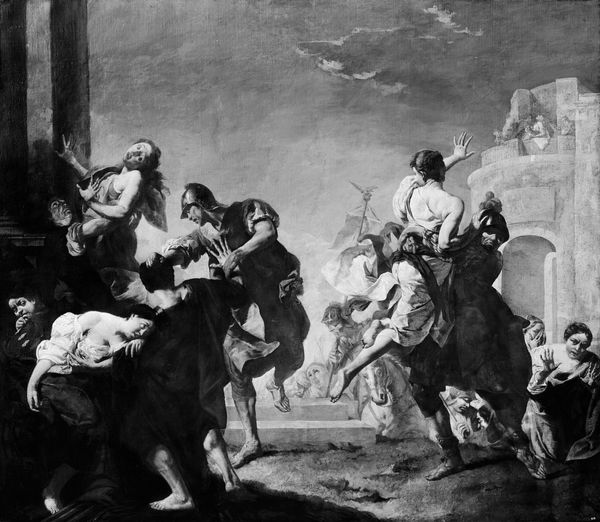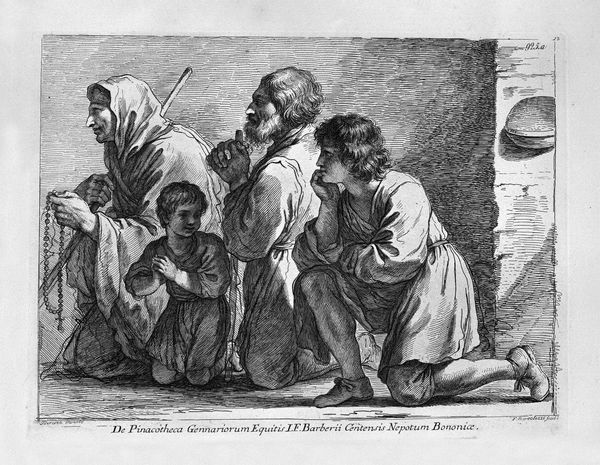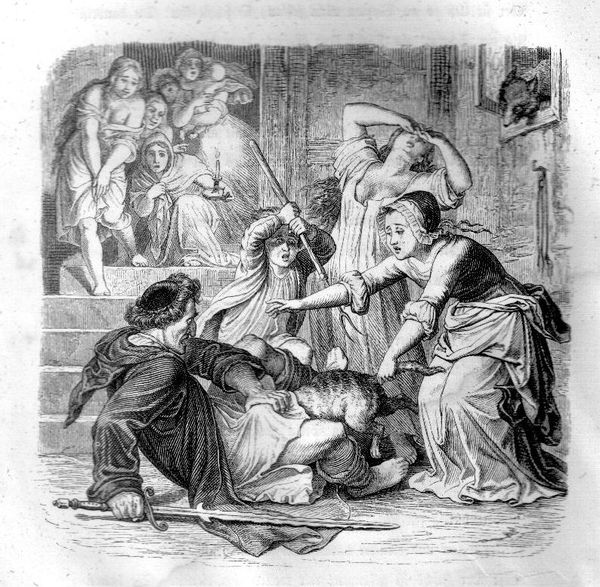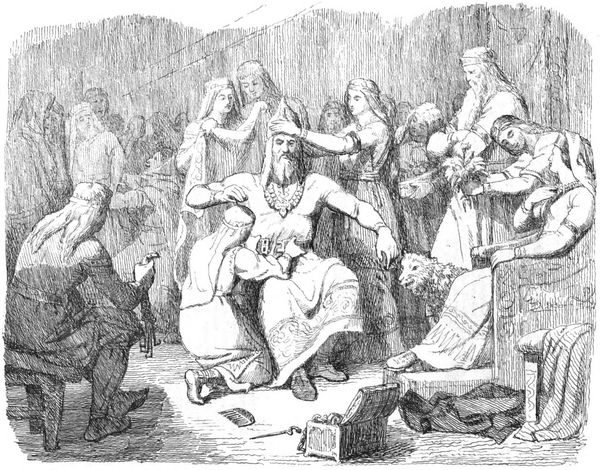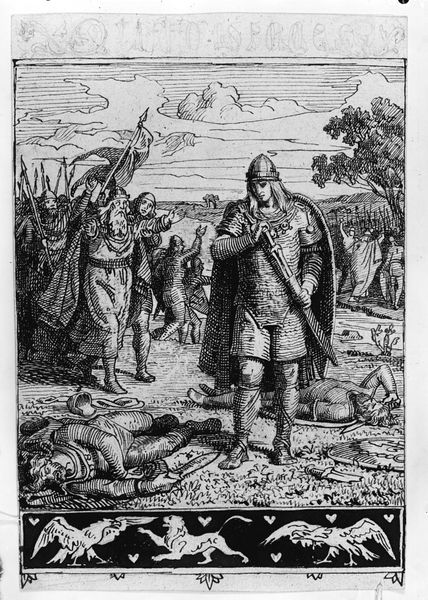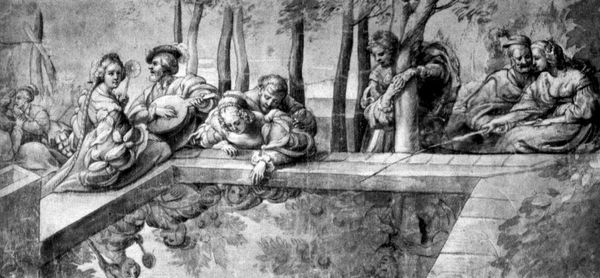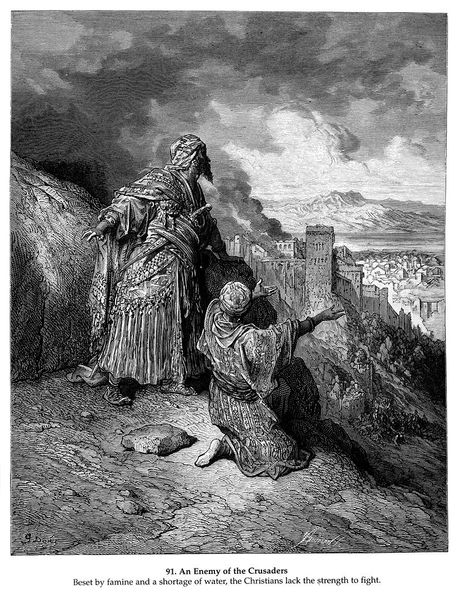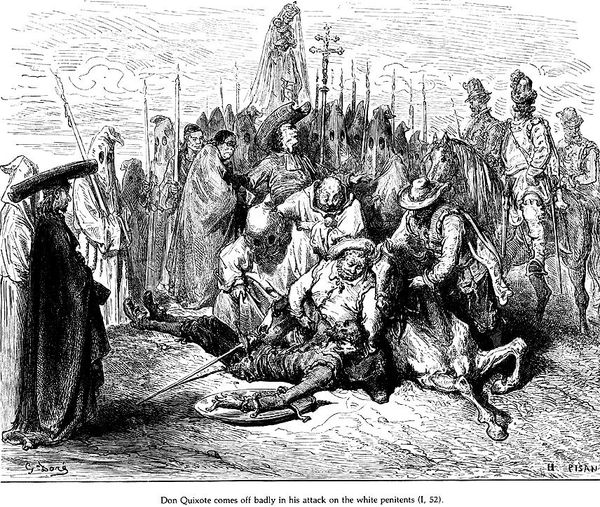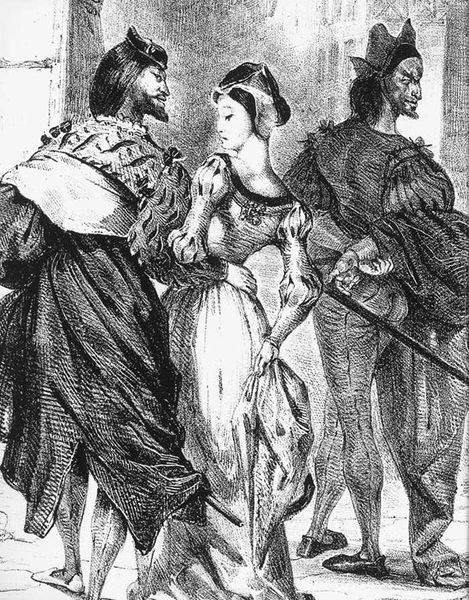
drawing, charcoal
#
drawing
#
narrative-art
#
charcoal drawing
#
figuration
#
romanticism
#
charcoal
#
history-painting
#
charcoal
Copyright: Public domain
Eugène Delacroix made this lithograph, Hamlet and Horatio before the Grave Diggers, in 1843. The printmaking technique is significant here. Lithography relies on the tension between oil and water. The artist draws an image on a stone with a greasy crayon, then wets the stone. Ink adheres only to the greasy areas, allowing the image to be printed. Consider the labor involved. Delacroix would have needed a perfectly smooth lithographic stone. He would also need to be a skilled draughtsman to create the image in reverse, since prints are mirror images of the original drawing. The tonal gradations in the print are achieved by varying the pressure and texture of the crayon, a process that demands control and sensitivity. The play's themes of mortality and social class are mirrored in the print's making. The grave digger's manual labor contrasts with the refined skill of the artist, just as Hamlet's philosophical angst contrasts with the gravedigger's earthy humor. Appreciating the materials and processes behind this print enriches our understanding of its social and cultural context.
Comments
No comments
Be the first to comment and join the conversation on the ultimate creative platform.
